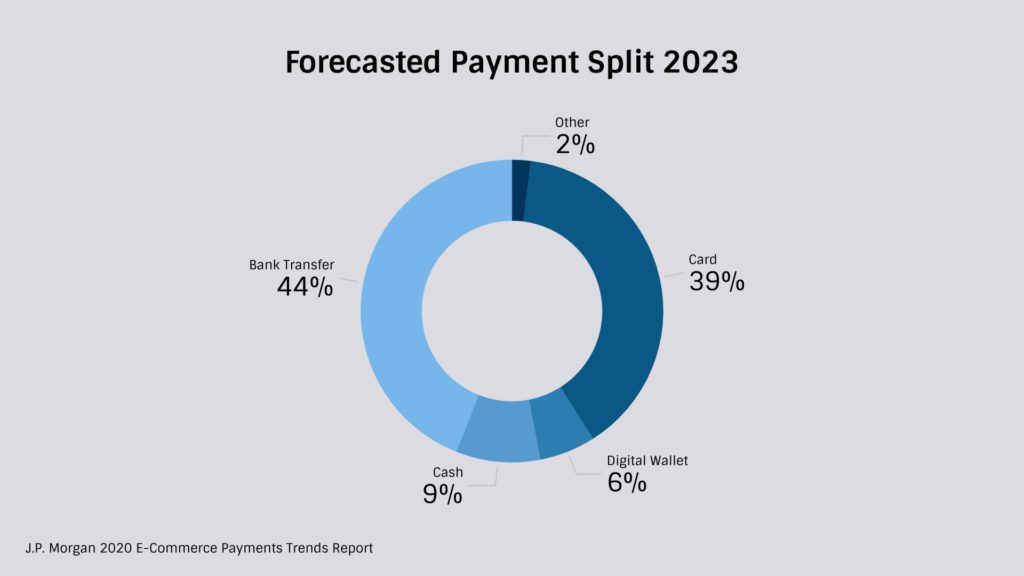Discover the Popular eCommerce Trends and Online Payment Methods in Malaysia to See Why This Emerging Market is Poised for Growth.
Malaysia is a hot destination for businesses looking to expand to emerging markets. Malaysia is the 35th largest market for eCommerce, with a revenue of US$6 billion in 2021 (eCommerce DB). In Southeast Asia, Malaysia has some of the highest and most consistent GDP growth.
Cross-border ecommerce is an essential part of Malaysian online shopping and makes up 44 percent of all ecommerce sales. More than half (52 percent) of Malaysian online shoppers spend cross-border (JP Morgan). And with a relatively young, digitally savvy population, Malaysian consumers are willing to look far and wide for the right products.
Fast Facts about eCommerce in Malaysia
- Malaysia is home to 32 million residents (JP Morgan)
- 64% smartphone penetration and 80% internet penetration (JP Morgan)
- Malaysia’s mobile commerce growth is quickly rising at an expected CAGR of 19 percent (JP Morgan)
- Malaysian ecommerce is valued at $4 billion (JP Morgan)
- Cards are a popular online payment method in Malaysia, representing 36% of the online market in 2019
- Credit card usage is expected to grow to 39% by 2023 (JP Morgan)
Malaysia: Payment Methods and eCommerce Trends
Table of Contents
- Malaysia: Payment Methods and eCommerce Trends
- Most Popular Payment Methods in Malaysia
- Asia Pacific eCommerce & Payments Guide
- Top Trends in Malaysian eCommerce
- Looking to Grow Online Sales? Add Rapyd’s All-in-One Payment Solution for Malaysia.
- The Fastest Way to Access and Offer Malaysia’s Top Payment Methods
Most Popular Payment Methods in Malaysia
Expanding your business to the Malaysian market requires knowledge of local payment methods. There are four major payment categories in Malaysia that are important to understand. While cash remains popular, bank transfers are quickly becoming the dominant payment method, and cards and ewallets can’t be overlooked.
Bank Transfers
Bank transfers are the driver of the Malaysian ecommerce economy, representing 44% of transactions in 2019 and projected to remain stable over the next few years (JP Morgan). This is true for both B2C ecommerce as well as B2B payments in Malaysia.
Transfers are dominated by Maybank2u. There are several reasons why bank transfers are expected to continue to be a popular Malaysian payment method. Bank penetration within Malaysia is 85%, and many domestic banks have launched their own branded transfer options, such as CIMB Clicks (JP Morgan).
Cards
Cards are the second most popular online payment method in Malaysia. Representing 36% of the online market in 2019, credit card usage is expected to grow to 39% by 2023 (JP Morgan).
The growth of credit card use is supported by many factors including aggressive marketing campaigns with incentives, improved banking infrastructure and increased point-of-sale card acceptance. Malaysians now favor credit cards over debit cards by 4-to-1 showing that they prefer to extend their credit lines for purchases (WireCard).
Malaysians now favor credit cards over debit by 4-to-1
Cash
Cash remains a frequently used payment method in Malaysia. McKinsey estimates around 72% of all Malaysian transactions are cash-based and in fact, cash is used in 7% of digital transactions. Cash has remained relatively popular and while projected to decrease in use, is expected to do so slowly. It is likely that Malaysia will be a largely cashless society in twenty years (Open Gov Asia).
Digital Wallets
About 50% of all ecommerce transactions in Asia are conducted through ewallets (BCG). Malaysia is seeing a trend toward this type of payment for various reasons. For one, there are more e-money issuers in Malaysia than credit card issuers. In Southeast Asia, Malaysia is a leader in mobile wallet adoption, with 40% of residents utilizing the technology (The Edge Markets). Boost (9.8%), Touch N Go (7.0%), Grabpay (3.6%) and PayPal (1.6%) are all preferred vendors of increasing importance with Boost accepted in over 140,000 locations (Wise).
The varied preferences of consumers in Malaysia mean that merchants need an all-inclusive payments strategy that includes popular bank transfers, local cards, ewallets and cash acceptance for digital transactions.

Top Trends in Malaysian eCommerce
Strong YOY Growth
Malaysia is a country ripe with opportunities for merchants. This is due to solid ecommerce growth, rising basket spend and a digitally savvy population. eCommerce DB reports that top categories include fashion (31%), electronics and media (28%) and furniture and appliances at 13%.
Marketplaces and large seller platforms control a sizable share of ecommerce. Among these top ecommerce sites are marketplaces Shopee, Lazada, FanMart and PG Mall (JP Morgan).
High-Average Spend and Social Shopping Growth
The average yearly basket spend is MYR2,004 (US$484) and has been quickly rising in recent years (JP Morgan). Social media and social shopping are a key part of this growth, with 81 percent of Malaysian active on social in 2020 and one in six Malaysians using social media for more than nine hours a day (New Straits Times). By integrating social media into their marketing offerings and ecommerce experience, merchants can quickly engage with more local consumers.
Growth Guided By Government Support
The Malaysian government is carefully monitoring ecommerce development and taking steps to balance regulation with rapid growth. This economic development has faced constraints because of infrastructure issues, such as outdated payment methods, delivery, and fraud challenges.
Because of this, the government has created new taxes, regulations and domestic incentive schemes. Those new to this market should consider working with an experienced local payment provider and expert payments and regulatory advisers.
And the government continues to support ecommerce development post-COVID-19, with ecommerce growth as a vital part of the government’s national economic recovery plan, and US$33 million in state investment dedicated to developing domestic ecommerce sites (The Edge Markets, Wise).
Cards Are Key
The growth of credit card use is supported by many factors, including aggressive marketing campaigns with incentives, improved banking infrastructure and increased point-of-sale card acceptance. Malaysians now favor credit cards over debit cards by 4-to-1, showing that they prefer to extend their credit lines for purchases (JP Morgan).
Looking to Grow Online Sales? Add Rapyd’s All-in-One Payment Solution for Malaysia.
The Fastest Way to Access and Offer Malaysia’s Top Payment Methods
Reach new customers and grow revenue with a single platform that provides a truly local payment experience in Malaysia and around the world.
Rapyd provides deep local payment expertise through our network of leading Malaysian payment partners, so you can focus on growing your business.
- Popular local payment methods
- Accept payments and make payouts in 100+ countries
- Online, in-store and mobile app payments
Sources
- Overview of Business in Malaysia. https://aseanup.com/business-malaysia/
- JP Morgan. Merchant Services Insights Malaysia. https://www.jpmorgan.com/merchant-services/insights/reports/malaysia
- Wirecard. Opportunities for Payments Operators.
- McKinsey. Global Payments Report. 72% of transactions are cash-based in Malaysia
- https://www.mckinsey.com/~/media/McKinsey/Industries/Financial%20Services/Our%20Insights/Accelerating%20winds%20of%20change%20in%20global%20payments/2020-McKinsey-Global-Payments-Report-vF.pdf
- OpenGovAsia. Malaysia Expected to Become a Cashless Society. https://opengovasia.com/malaysia-expected-to-become-cashless-society-in-20-years/
- Boston Consulting Group. Southeast Asian Consumers Are Driving a Digital Payment Revolution https://www.bcg.com/en-us/publications/2020/southeast-asian-consumers-digital-payment-revolutions
- The Edge Markets. Finance Digital Payments Gives Users More Bang for Their Ringgit. https://www.theedgemarkets.com/article/finance-digital-payments-give-users-more-bang-their-ringgit
- Wise. eWallet Comparison https://transferwise.com/my/blog/10-ewallets-malaysia
- New Straits Times. Locals spend 5 hours on social media daily https://www.nst.com.my/news/nation/2019/05/484547/locals-spend-5-hours-social-media-daily
Subscribe Via Email
Thank You!
You’ve Been Subscribed.





